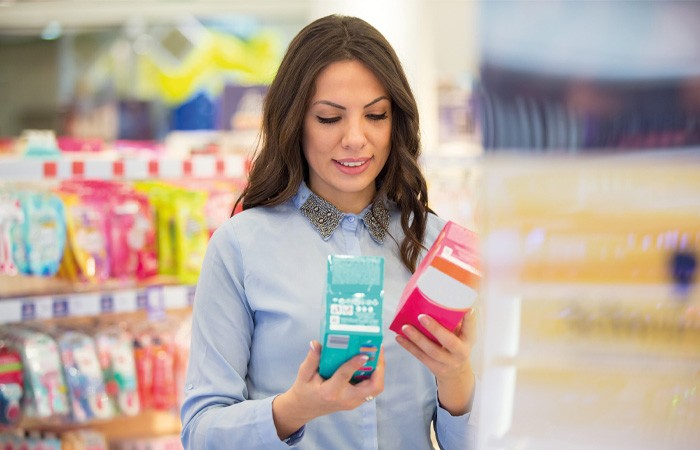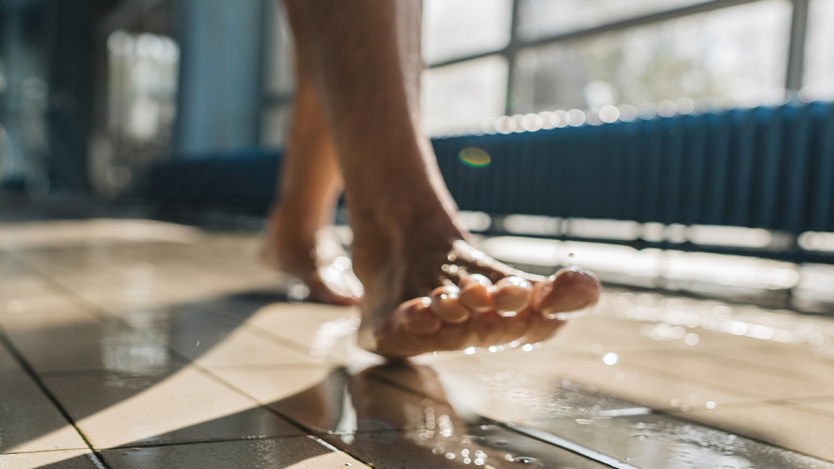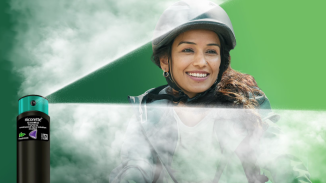In OTC Category Reviews
Follow month by month updates on topics including asthma, mental health and skin conditions and be able to provide informed advice to customers at the counter.Bookmark
Awareness and acceptance of bladder weakness has increased in recent years, but pharmacy staff need to be aware that many people suffer in silence
Bladder weakness affects people of all ages and both sexes. As many as one in four women and one in 10 men are affected at some point in their lives. Age UK says more than 2.5 million people over 60 in the UK suffer from some degree of urinary incontinence.
It is likely that the condition is underreported because people are often either too embarrassed to seek help, do not want to bother their GP or feel that their condition is a normal part of ageing.
Risk factors and causes
“We are seeing more and more people asking for advice on bladder weakness in the pharmacy,” says Sultan ‘Sid’ Dajani, superintendent pharmacist at Wainwrights Chemist in Bishopstoke, near Southampton. “This could be due to stress, people living longer or living sedentary lifestyles, which leads to weight gain. These are all risk factors for bladder weakness.”
Other risk factors include a family history of the condition, long-term constipation putting stress on the pelvic floor muscles and having lower urinary tract symptoms that affect the bladder or urethra. Perhaps the most well-known risk factor is increasing age – urinary incontinence becomes more common in middle age and is very common in people who are 80 or older.
There are also multiple different causes of urinary incontinence, including:
- Weak pelvic floor muscles, often caused by childbirth
- Increased pressure on the tummy, which may be caused
by obesity or pregnancy - Drinking too much caffeine or alcohol
- Not drinking enough fluids – this can cause strong, concentrated urine to collect in the bladder, which can cause irritation and over active bladder symptoms
- Certain medicines, such as angiotensin converting enzyme (ACE) inhibitors, diuretics, some antidepressants, hormone replacement therapy (HRT) and sedatives
- An enlarged prostate
- Damage to the bladder or surrounding area during surgery – such as during a hysterectomy or removal of the prostate gland
- Neurological conditions that affect the brain and spinal cord, such as Parkinson’s disease and multiple sclerosis.
Understanding the different types
There are several types of bladder weakness:
- Stress incontinence: urine leaks when the bladder is under pressure, for example when someone laughs, coughs, exercises or lifts something heavy
- Urge incontinence: urine leaks when a person feels a sudden, intense urge to wee, or shortly afterwards
- Mixed incontinence: a combination of stress and urge incontinence
- Overflow incontinence: frequent leaks occur when a person is unable to fully empty their bladder
- Total incontinence: the bladder is unable to store any urine at all, which causes the person to pass urine constantly or have frequent leaks.
“People come in not knowing anything about bladder weakness, so our role in the pharmacy is to educate them about the different types,” says Sid. “There are different ways we can help them, according to the type of bladder weakness they have.”
Managing bladder weakness
A wide range of incontinence products can be sold in community pharmacies, each designed to fit men or women and to cater for customers’ individual needs, both during the day and at night.
Customers can choose incontinence pads of differing absorbencies, including slim pads for people with mild to moderate bladder weakness and thicker pads and pants that offer greater security for those with more severe symptoms. Many products have the added benefit of odour protection, which can help customers to feel more confident when they are out and about.
Some women use sanitary pads instead of incontinence pads, often because they tend to be cheaper. There is also a widespread misconception that they are similar products and will do the same job. In fact, incontinence products have a special ‘hydrophobic’ layer that draws urine away from the surface of the product, so the skin stays dry. This technology, which is also used in babies’ nappies, is specially designed for urine leakage. Sanitary products are designed in a different way and using them for bladder weakness can leave the skin damp and feeling quite sore.
Washable products are also available and include waterproof pants and fixation pants that are designed to hold incontinence pads in place to reduce leaking. A variety of incontinence bedding and seat pads are also available.
In addition to these disposable and washable absorbent products, pharmacy staff can recommend a range of products to combat some of the other symptoms associated with bladder weakness. These include barrier creams to protect and relieve sore skin and wet and dry wipes for cleansing sensitive skin. Fragranced nappy bags can also be purchased for hygienic disposal of used products.
“Pharmacy staff should advise people on the incontinence products best suited to their problem,” says Sid. “In the pharmacy, we can provide individual care, so if people need a product of a certain size or type that is not stocked, we can order it in. Some people may require a referral to the GP.”

Lifestyle advice
As well as product recommendations, pharmacy teams are well placed to offer lifestyle advice and self care tips to help customers manage and prevent bladder weakness.
When it comes to diet, customers should be advised to eat healthily and to avoid acidic and spicy foods as well as carbonated drinks as these can all irritate the bladder. Cutting down on caffeine and alcohol, which are both diuretics, can be helpful, as can maintaining a healthy weight – losing weight if necessary – and keeping fit through regular exercise. Quitting smoking, where relevant, and doing pelvic floor exercises are also important.
While some people may try to drink less water to avoid leaks, they should be advised to stay adequately hydrated and drink the recommended six to eight cups of water each day. Preventing constipation by eating plenty of fibre-rich foods is also a good idea.
Top tips to pass onto customers to help them live well with bladder weakness include:
- Be prepared: practical solutions when out and about could include taking spare pads and pants plus scented bags for disposing of soiled products
- Take care of skin: wash and dry skin carefully with a soft towel, change pads regularly, using a disposable wipe to remove any residue, and use barrier creams if the skin becomes sore
- Stay fresh: change pads frequently to avoid odours
- Dress for ease: choose clothing with elasticated waists, or fastenings with Velcro instead of zips and buttons.
Sid says the trump card that pharmacy teams have when it comes to supporting customers with bladder weakness is the private consultation room, which enables customers to open up in confidence to a trusted healthcare professional. “The secret of providing good care is to be friendly, approachable and trustworthy and to know how to be sensitive and confidential,” he says.
Consultation Skills
Shaheen Bhatia, pharmacist superintendent at P&S Chemist, Redbridge, says that one of the most important considerations for discussing sensitive subjects with customers is making them feel at ease. One of the main ways this can be done is to suggest they talk about the issue in the consultation room.
“As soon as we realise somebody wants to speak about a sensitive topic like bladder weakness or if they are struggling to express what their concerns are, we will straight away ask them if they would prefer to sit in the consultation room to discuss their problem,” she says. “As soon as the door closes, it makes people feel more confident and less rushed and that you have more time to listen to what they are saying.”
Discussing bladder weakness management products and lifestyle advice is important, but understanding a customer’s wider concerns can help pharmacy teams offer more comprehensive advice and even potential referral.
“People at first might just ask for a particular incontinence product, but it’s important to go back to basics and to help people tell you what their problem really is. It’s important to build up a good rapport with the customer – that first contact is always important,” says Shaheen. “In our pharmacy, most of our incontinence products are stocked behind the counter so that when people ask for them, we can ask questions and give the correct advice.”
She also says that being friendly and approachable is imperative for pharmacy staff and that they “should be able to talk confidently about incontinence products and recognise when somebody wants to talk in more depth about a problem”.
RPS call to action on incontinence
A Royal Pharmaceutical Society (RPS) call for action to improve health inequalities experienced by women across Great Britain identifies incontinence as a key health issue.
The initiative, launched in July 2021, highlights concern about the way many women’s health issues such as incontinence are associated with stigma. This may result in women feeling uncomfortable to openly discuss them and lead to tolerance of abnormal symptoms, reducing quality of life.
The RPS says community pharmacists and their teams are uniquely placed to improve the health and wellbeing of women because they understand the needs and challenges of women in their local areas. This can help to address health inequalities.
The organisation recommends that more thought is given to how pharmacists can fully support women suffering from bladder weakness from marginalised communities, such as minority ethnic groups, people who are homeless or have no permanent address, people in economically deprived and rural communities, members of the LGBTQIA+ community, and those unlikely to access other healthcare services.
Claire Anderson, RPS president, says that pharmacists can help reduce stigma and improve women’s awareness of what is normal and what is not on issues such as incontinence.
Sponsored
 Sponsored education
Sponsored education
Challenge your thinking on warts and verrucas
Discover different treatment options for warts and verruas and when to recommend them to your customers, based on their individual needs
 Sponsored education
Sponsored education
Helping vapers find a path to quit
Help vapers find a path to a nicotine-free life when they are ready to quit with the first NRT product licensed for this indication


Record my learning outcomes